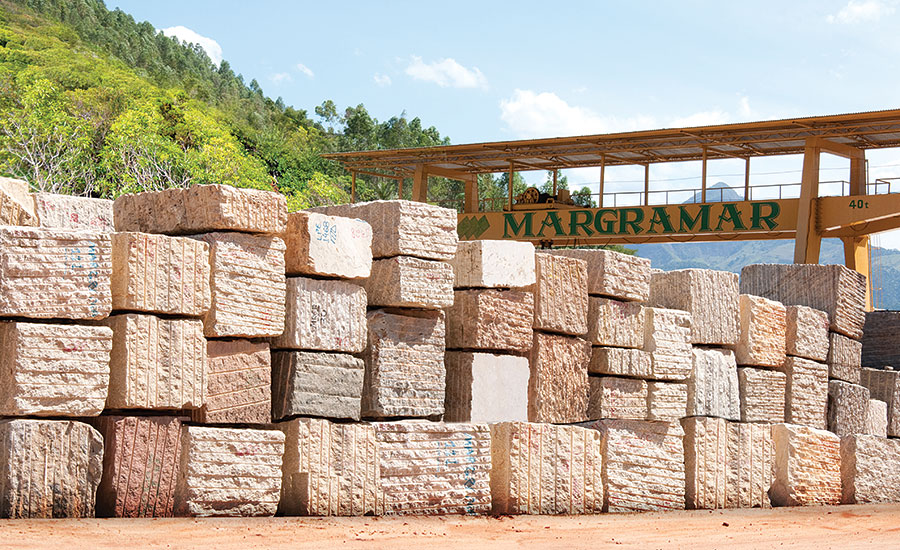A Trip With Granite Quarries in South Africa: Introduction Nature's Artistry
A Trip With Granite Quarries in South Africa: Introduction Nature's Artistry
Blog Article
Exploring the Hidden Midst of Granite Quarrying: Unveiling Nature's Masterpiece
The world of granite quarrying is a realm where nature's ancient procedures fulfill human ingenuity in a cooperative dance that has actually shaped landscapes and worlds for centuries. From the complex geological formations that birth this majestic rock to the meticulous strategies and equipment used in its removal, the trip right into granite quarrying is a testimony to the harmonious conjunction in between guy and nature. As we begin to unwind the layers of this sector, we are met a tapestry of ecological considerations, artistic endeavors, and global ramifications that bid us to check out better the covert depths of this natural work of art.

Geological Formation of Granite
Granite, a sort of igneous rock, forms deep within the Planet's crust through a complicated process of cooling and solidification. This all-natural rock originates from the slow condensation of liquified magma deep beneath the Planet's surface area. As lava cools, mineral crystals such as feldspar, quartz, and mica begin to create, developing the special polychromatic patterns and shades characteristic of granite. granite quarries in south africa. The cooling procedure can take countless years, permitting the advancement of large mineral grains that offer granite its unique texture and resilience.
Geologically, granite is classified as a felsic invasive rock, indicating it is rich in silica minerals and kinds from lava that intrudes into existing rock developments. This intrusive formation process contributes to granite's grainy texture and high compressive stamina, making it a prominent option for construction and building functions. Due to its appeal, longevity, and resistance to heat and scrapes, granite has actually come to be a popular material for kitchen counters, floor covering, and ornamental aspects in both property and industrial settings.
Quarrying Methods and Equipment
Using innovative equipment and specific methods, quarrying procedures essence granite from natural deposits with efficiency and accuracy. The procedure starts with the recognition of appropriate granite deposits via geological surveys. As soon as a viable site lies, the extraction phase starts. Diamond cord saws are commonly used to puncture the granite, as they use accuracy cutting without triggering damage to the rock. These wire saws are run by proficient technicians that thoroughly browse the cuts to make certain maximum yield from the quarry.
Large excavators and loaders are after that employed to eliminate the cut granite blocks from the quarry. On the whole, the combination of sophisticated machinery and proficient labor is necessary in the quarrying procedure to essence granite successfully while preserving its quality.
Environmental Effect and Sustainability
With the enhancing concentrate on environmental awareness in industrial methods, the granite quarrying industry is under analysis for its influence on ecosystems and natural sources. Quarrying for granite can have considerable ecological consequences, including habitat destruction, dirt disintegration, and water pollution. The removal of granite often involves making use of dynamites to damage the rock, leading to noise and air pollution. The hefty equipment utilized in quarrying procedures consumes big amounts of energy, adding to greenhouse gas exhausts.
To mitigate these environmental influences, lasting quarrying practices are being established. Firms are applying procedures such as reforestation programs, water recycling systems, and dust suppression strategies to minimize their environmental impact. Furthermore, some quarries are currently using renewable energy sources to power their procedures, reducing dependence on fossil gas.
Virtuosity in Granite Sculpting
The detailed procedure of transforming raw granite right into spectacular masterpieces requires phenomenal skill and workmanship. granite recommended you read quarries in south africa. Granite sculpting is a meticulous art form that requires persistence, imagination, and an intense understanding of the stone's residential or commercial properties. Artists should possess a deep admiration for the natural beauty of granite and the capacity to imagine and extract the hidden creativity within it
Creativity in granite sculpting includes a collection of accurate actions. The artist begins by choosing the ideal granite slab, thinking about aspects such as shade, veining, and appearance. Then, using specialized devices like chisels, mills, and brushes, the artist carefully carves, forms, and refines the rock to bring their vision to life. Each sculpt mark, each contour, and each polish is a purposeful and computed relocation towards perfection.
The result of granite sculpting is a breathtaking work of art that showcases the artist's skill and the fundamental appeal of the stone itself. Whether it's an impressive statuary, an intricate fountain, or a detailed alleviation carving, granite sculptures stand as testaments to human imagination and the enduring allure of natural materials.
Worldwide Significance of Granite Industry
Playing a pivotal role in building and construction and architectural jobs worldwide, the granite market acts as a foundation in the worldwide economy. With its flexibility, durability, and aesthetic allure, granite has ended up being a preferred selection for a large range of applications, consisting of counter tops, floor covering, monoliths, and exteriors. The industry not just offers job opportunity but additionally drives financial growth via exports and neighborhood intake.

Additionally, the granite market plays an important role in sustainable development campaigns by advertising liable quarrying methods and buying green innovations. As the need for natural stone remains to rise, the international relevance of the granite sector in forming metropolitan landscapes and maintaining social heritage can not be overemphasized.
Conclusion
Finally, the granite quarrying market plays an essential function in showcasing nature's work her response of art (granite quarries in south africa). From its geological development to the virtuosity in sculpting, granite remains to hold international significance. It is vital to think about the environmental impact and aim in the direction of sustainability in quarrying practices. By understanding the quarrying strategies, tools, and the artistry included, we can value the covert midsts of this natural deposit and its payment to numerous markets visit worldwide.
Report this page